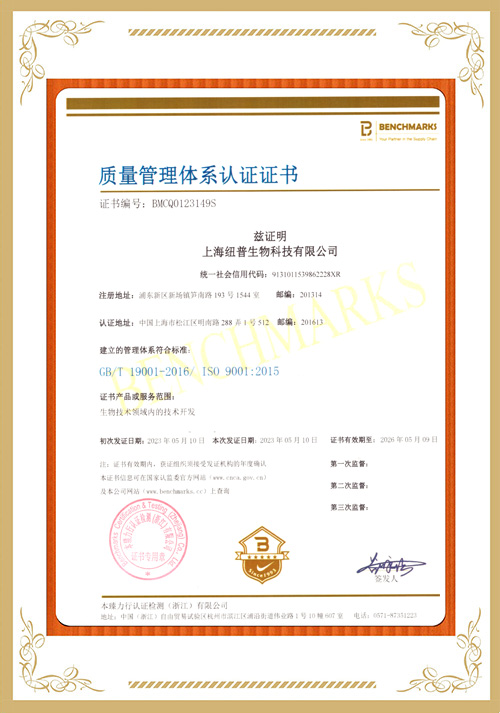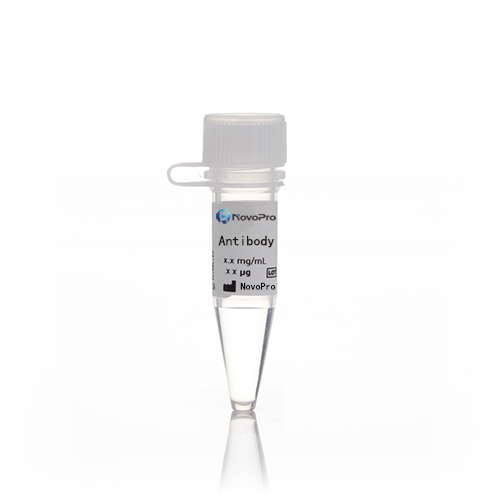- 抗体类型:多克隆
- 抗体来源:兔
- 抗体应用:ELISA, WB, IP
- 特异性:Mouse Cathepsin L / CTSL
产品详情
-
产品名称
Anti-Cathepsin L/CTSL1 antibody
-
抗体类型
多克隆
-
抗体来源
兔
-
抗体亚型
兔IgG
-
抗体描述
Rabbit polyclonal to Cathepsin L/CTSL1
-
抗体应用
ELISA, WB, IP
-
应用推荐
WB: 1-10 μg/mL
ELISA: 0.1-0.2 μg/mL
This antibody can be used at 0.1-0.2 μg/mL with the appropriate secondary reagents to detect Mouse CTSL. The detection limit for Mouse CTSL is approximately 0.00975 ng/well.
IP: 1-4 μg/mg of lysate
-
特异性
Mouse Cathepsin L / CTSL
-
蛋白别名
1190035F06Rik, Cathepsin L, Cathepsin L, Cathepsin L1, Cathepsin L1, CATL, Ctsl, CTSL, Ctsl1, CTSL1, FLJ31037, fs, MEP, nkt, Mep, MEP, CATL, CTSL1, fs, MEP, nkt, Ctsl1, 1190035F06Rik
-
制备方法
Produced in rabbits immunized with purified, recombinant Mouse Cathepsin L / CTSL (rM Cathepsin L / CTSL; P06797; Met 1-Asn 334). Cathepsin L / CTSL specific IgG was purified by Mouse Cathepsin L / CTSL affinity chromatography.
-
组分
0.2 μm filtered solution in PBS with 5% trehalose
-
储存方法
This antibody can be stored at 2℃-8℃ for one month without detectable loss of activity. Antibody products are stable for twelve months from date of receipt when stored at -20℃ to -80℃. Preservative-Free.
Sodium azide is recommended to avoid contamination (final concentration 0.05%-0.1%). It is toxic to cells and should be disposed of properly. Avoid repeated freeze-thaw cycles. -
背景介绍
Cathepsin L is a lysosomal cysteine protease that plays a major role in intracellular protein catabolism, and is potent in degrading collagen, laminin, elastin, as well as alpha-1 protease inhibitor and other structural proteins of basement membranes. It is secreted by liver flukes at all stages of their development in the mammalian host, are believed to play important roles in facilitating parasite migration (tissue degradation), feeding and immuno-evasion. Like many proteases, Cathepsin L is synthesized as an inactive preproenzyme, and cleavage of the 96-residue proregion is necessary to generate the fully active 221-residue mature enzyme. Studies have demonstrated that cleavage of the proregion occur autocatalytically under acidic conditions. The enzyme takes part in nutrient acquisition by catabolizing host proteins to absorbable peptides, facilitates the migration of the parasite through the host intestine and liver by cleaving interstitial matrix proteins such as fibronectin, laminin and native collagen and is implicated in the inactivation of host immune defenses by cleaving immunoglobulins. Recently, Cathepsin L has been shown to suppress Th1 immune response in infected laboratory animals making them susceptible to concurrent bacterial infections. Cathepsin L is synthesized in large amounts and secreted by many malignantly transformed cells, and induced by growth factors and tumor promoters. In addition to its role in protein degradation, evidence has accumulated for the participation of Cathepsin L in various physiological and pathological processes, such as tumor invasion and metastasis, bone resorption, spermatogenesis, and arthritis. Accordingly, Cathepsin L may prove useful as a diagnostic or prognostic marker of human tumor malignancy.
-
参考文献
- Mulcahy G, et al. (2001) Cathepsin L proteinases as vaccines against infection with Fasciola hepatica (liver fluke) in ruminants. Res Vet Sci. 70(1): 83-6.
- Dixit AK, et al. (2008) Immunodiagnostic/protective role of cathepsin L cysteine proteinases secreted by Fasciola species. Vet Parasitol. 154(3-4): 177-84.
- Leto G, et al. (2010) Cathepsin L in metastatic bone disease: therapeutic implications. Biol Chem. 391(6): 655-64.


